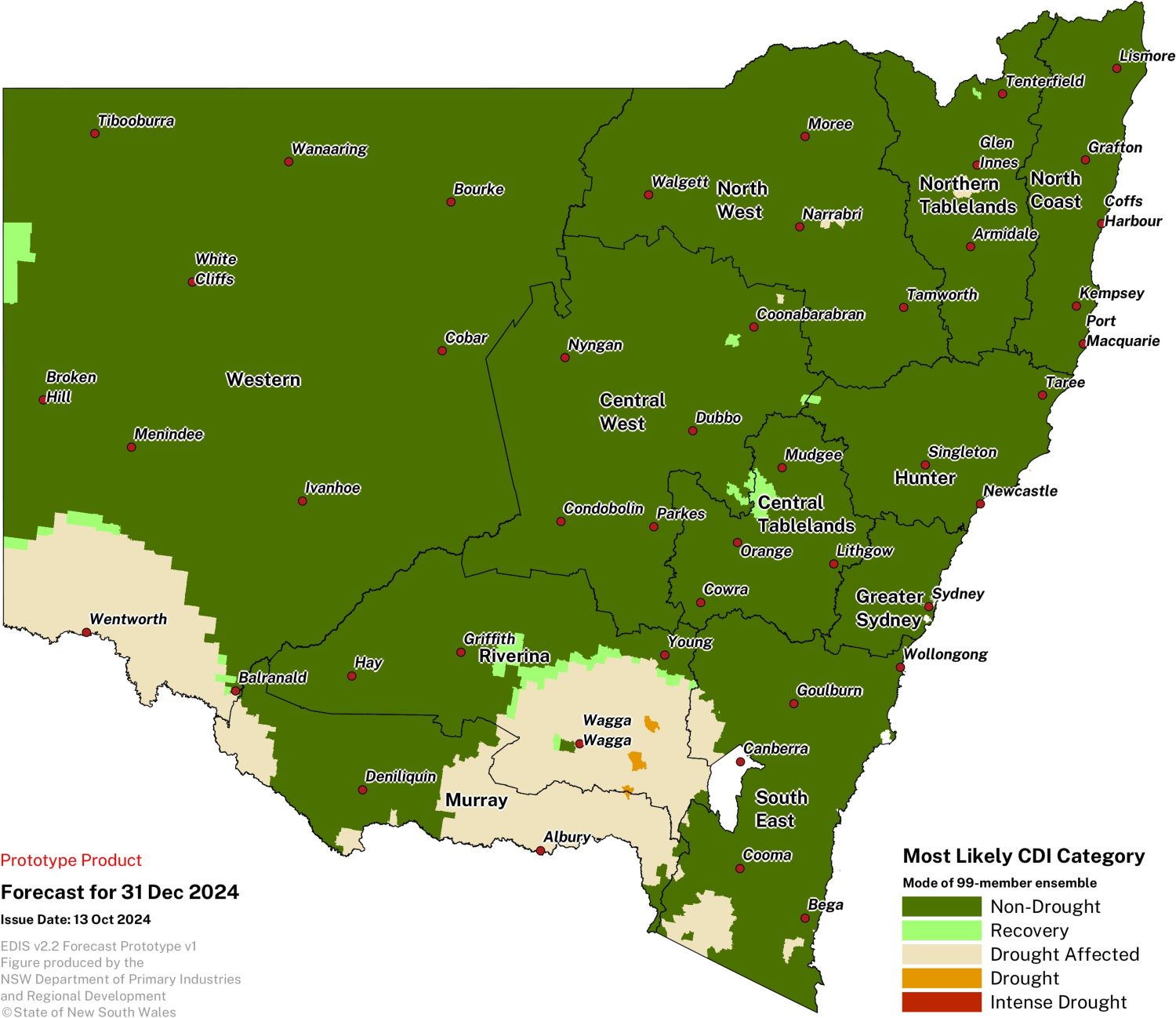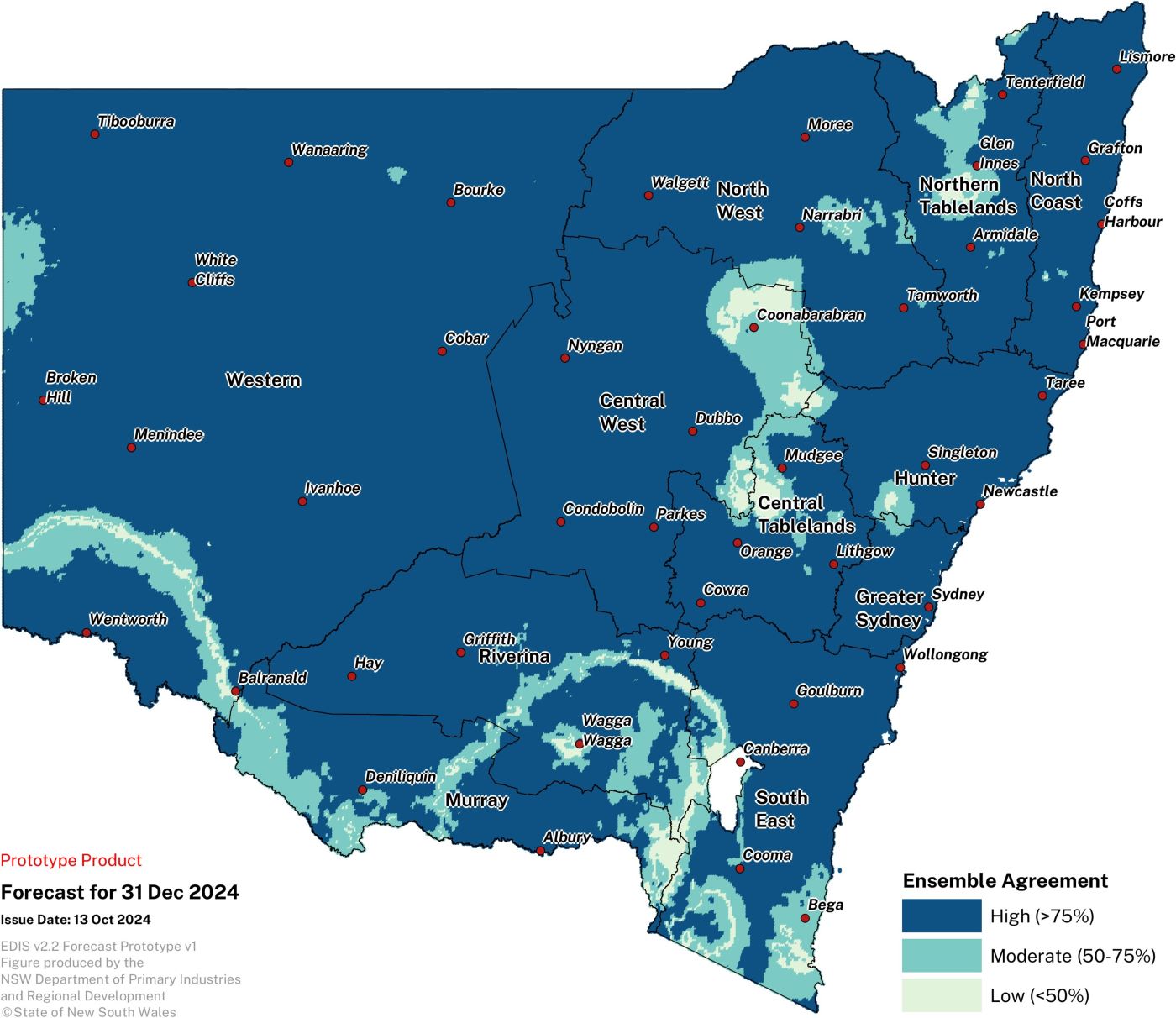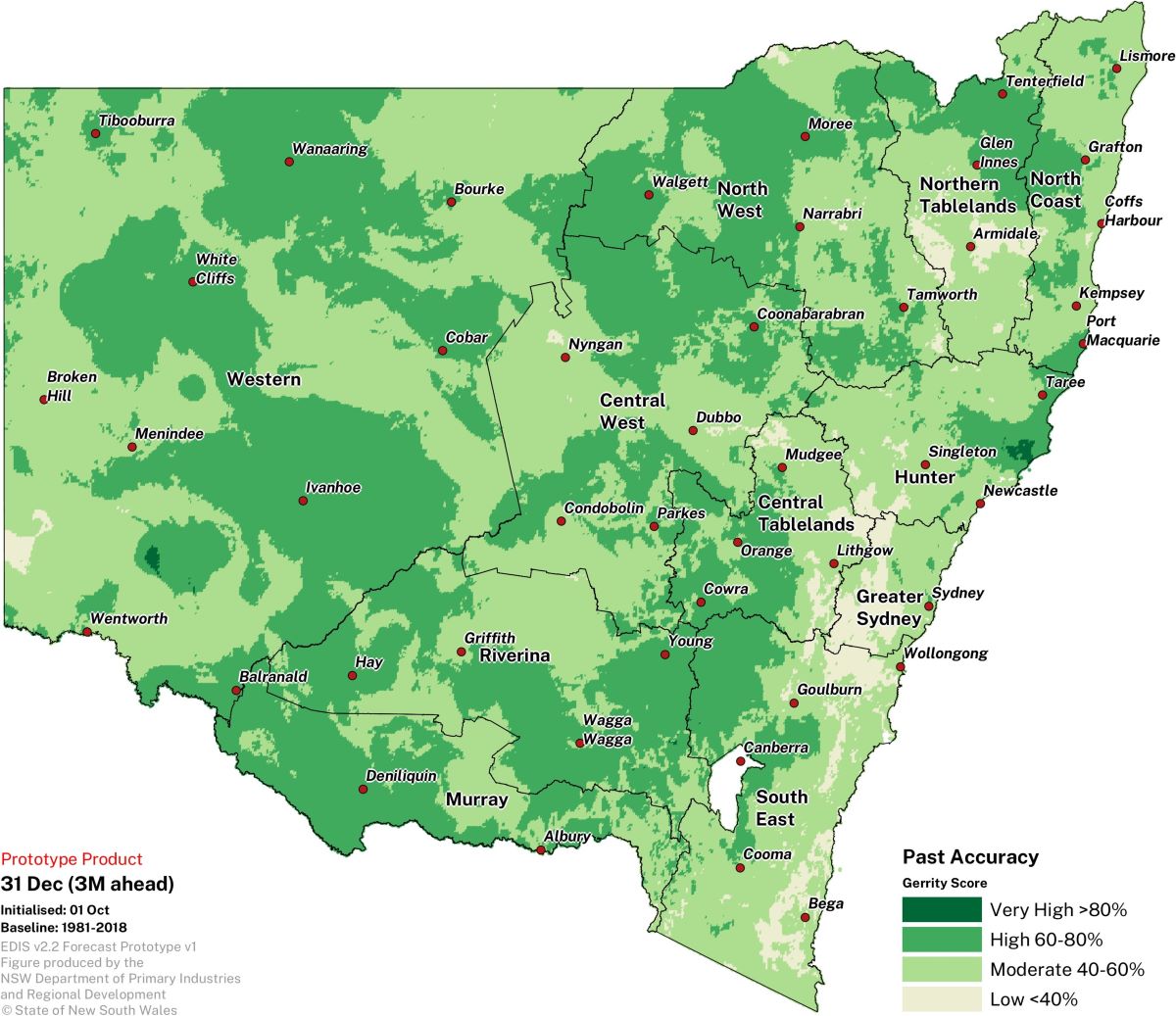February 2025
DPIRD drought forecast
DPIRD’s drought forecast shows that the most likely outcome at 31 May 2025 is that drought conditions are likely to expand across parts of NSW.
- In the south of the state, drought conditions are likely to continue and expand further into Western NSW.
- Drought conditions will also likely expand in north of the state, and the Hunter and Central Tablelands LLS by May 2025.
- Other parts of NSW are likely to remain in the Non-Drought CDI category.
- Forecast ensemble agreement and historical accuracy vary by region. In this forecast period regions of moderate to low agreement and accuracy correspond to those that are forecast to have intensifying drought conditions.
- The Ensemble Agreement map (bottom left) and Past Accuracy map (bottom right) should be used in conjunction with the Drought Forecast map. Where past accuracy and ensemble agreement is low, more caution should be used when interpreting the forecast.
DPIRD’s drought forecast uses the Bureau of Meteorology seasonal climate model ensemble to determine the NSW-CDI for the coming forecast period. The drought forecast figure shows the most frequent (mode) drought category in the 99-member model ensemble at the end of the forecast period.
Forecast releases
Drought Forecast maps are provided twice a month (on the release of the SSU and around the 20th of the month). Check here to see the latest version available. The latest version could be different to the figure below.

Understanding the DPIRD drought forecast figures
Most Likely CDI Category
The DPIRD drought forecast for NSW presents the ‘Most Likely’ Combined Drought Indicator (CDI) category for the forecast period. The Most Likely CDI category is determined by identifying the 'mode' of the CDI. The mode is the category that appears most frequently across all possible forecast outcomes in the ensemble run. It is the most common prediction for drought conditions in the forecast period based on the model's simulations.
This map can be used alongside the most current CDI map to observe current conditions and the most likely conditions in three months’ time.
Ensemble Agreement
Ensemble agreement refers to the level of consensus on the mode among the ensemble members. When there is high agreement, it means that most of models are predicting a similar CDI category, suggesting greater confidence in the forecast. If the agreement is low, it suggests that there is a wide range of possible outcomes, leading to greater uncertainty in the forecast.
Past Accuracy
Past accuracy refers to how the mode of previous forecasts matched the actual CDI categories that occurred for every forecast month in the historical record (1981 –2018), allowing an assessment of the reliability of the current forecast. If the model has consistently provided accurate predictions, there is more confidence in its current output. However, if past accuracy is low, it might suggest a need for more caution in interpreting the forecast, especially when ensemble agreement is low.
Overview of the DPIRD drought forecast
The seasonal drought forecast have been developed as a drought early warning system to prepare for drought events, mitigate drought impacts, and better aid farm and Government management decisions.
The DPIRD drought forecast has been generated by forcing the NSW DPI Enhanced Drought Information System (EDIS) with calibrated forecast variables from the Bureau’s seasonal prediction system, ACCESS-S to produce an ensemble of drought indicators. A 99-member lagged ensemble is used to determine the drought forecast.
A technical description of the DPIRD drought forecast, including a full analysis of the systems skill, is being prepared for public release in the Spring of 2024.
Find out more information about the drought forecast here.
Provide feedback
To provide feedback on the DPIRD Drought forecast, please email seasonal.conditions@dpird.nsw.gov.au
If you want to join our advanced forecast user group and help shape new products register your interest here.